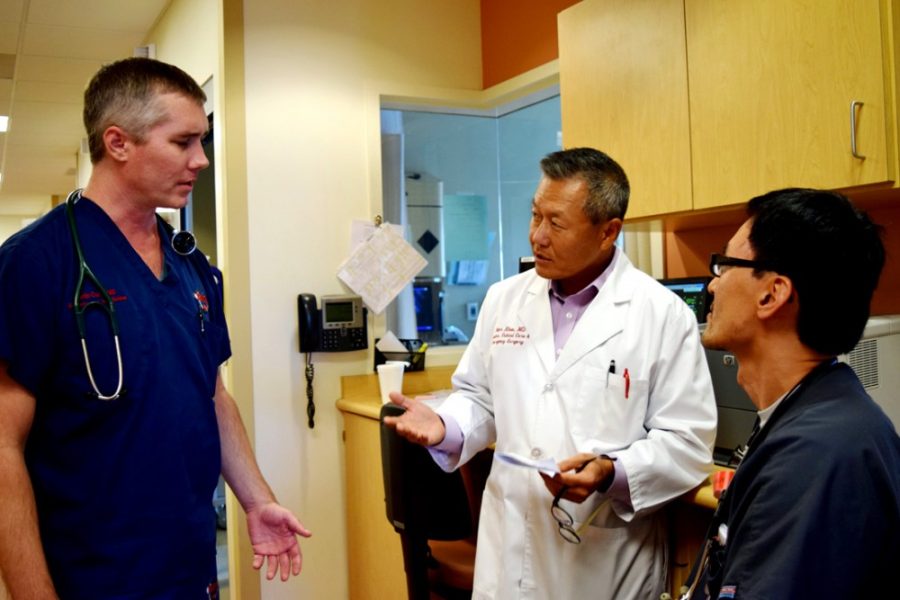UA professor of surgery Dr. Peter Rhee recently published a memoir, “Trauma Red: The Making of a Surgeon in War and in America’s Cities,” that detailed the groundbreaking research and behind-the-scenes specifics of the medical care he and his team gave former U.S. Rep. Gabrielle Giffords and the other victims after the 2011 shooting in Tucson.
People still recall and recreate the days previous presidents got shot and the medical care they received, said Rhee, a retired naval surgeon and current chief of trauma, critical care, burn and emergency surgery at the University of Arizona Medical Center — University Campus.
“If it doesn’t come from me now — the physician that took care of her — it might be confabulated in the future,” Rhee said.
Dr. John Watt, a trauma surgery and critical care fellow at UAMC, recalled the day of the 2011 shooting.
“I saw Dr. Rhee orchestrating the teams of doctors and nurses that were assigned to each patient as they rolled in,” Watt said. “He was also coordinating with police [and] the media and ultimately, he had to go to the operating room, but at that time he seemed to be everywhere at once, directing the controlled chaos according to his plan.”
The general public does not understand the role of a trauma surgeon in the same way as that of a brain surgeon, Rhee said.
In Rhee’s case, part of what he does is innovate in the surgical world.
For decades, a solution known as Lactated Ringer’s Injection was used as a resuscitation fluid following severe blood loss.
“I can’t tell you how many people we’ve killed in this country because we were throwing in 30 to 40 liters of this every day,” Rhee said. “The patients would then die from what we call multiple organ failure.”
Rhee recognized these problems and published over 40 papers debunking that treatment and advocated for safer treatments, even though there was significant resistance in the medical community to this change.
“[As a result,] the number of trauma patients who die from multiple organ failure has dropped off to almost zero,” Rhee said.
Rhee has also done significant work in the area of suspended animation. This involves draining the patient of all blood and injecting a potassium-rich cooling solution that induces severe hypothermia and stops the heart while leaving the brain undamaged.
Surgeons would then be able to correct all issues a patient has within this extended window of time before reviving the patient. UAMC is one of five institutions that has received approval for human trials in suspended animation from the Food and Drug Administration.
“He is a meticulous clinician, but he loves to teach, interspersing hilarious personal anecdotes and medical historical asides into rounds,” Watt said. “He thinks about complex surgical problems in a very logical, but sophisticated way, much to the benefit of his patients.”
Follow Laeth George @DailyWildcat









